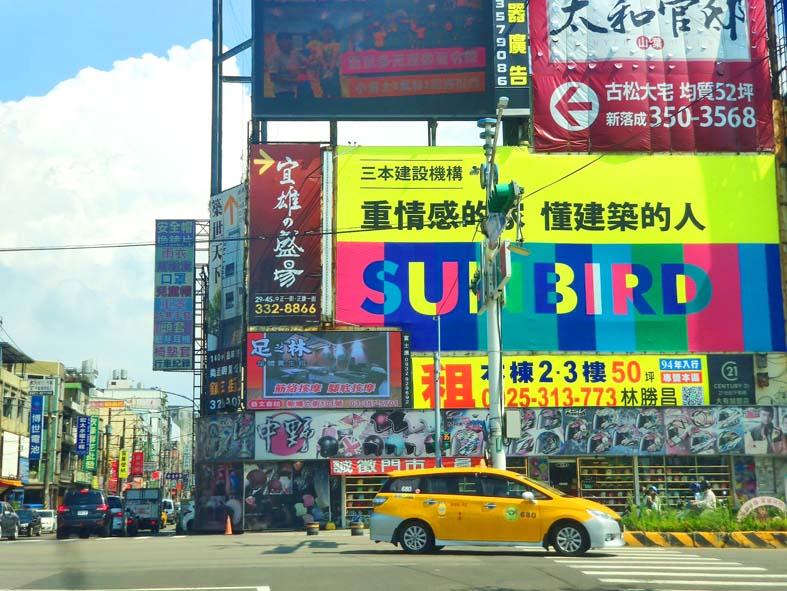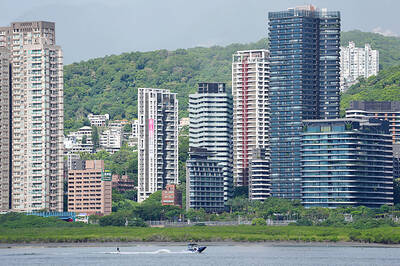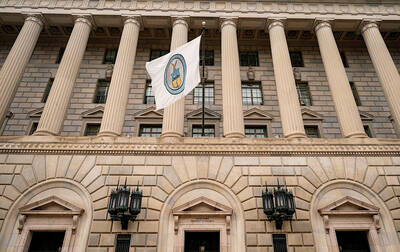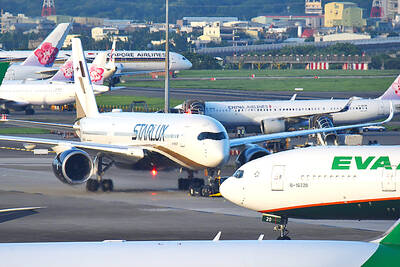Hiyes International Co (海悅國際開發), the nation’s largest housing broker, on Friday said its revenue last month more than doubled from a year earlier to NT$478 million (US$16.89 million), driven mainly by demand for housing in Hsinchu and Tainan.
The monthly figure was the second-highest next only to December last year’s NT$536 million, Hiyes said in a statement.
Cumulative revenue for the first two months of this year surged 133.93 percent year-on-year to NT$808 million, affirming a solid recovery after excluding the holiday effect, the company said.

Photo: Hsieh Wu-hsiung, Taipei Times
Demand for new housing is strong near technology clusters in Hsinchu and Tainan, where Taiwan Semiconductor Manufacturing Co (台積電) has announced plans to build new foundries to make advanced chips, Hiyes said.
The capacity expansion plans are creating new well-paid jobs, and attracting retail stores and real-estate developers to take advantage of the need for new housing, it said.
Stable economic growth also lends support to the property market, boosting demand for housing in New Taipei City, Taipei and Kaohsiung.
The first quarter, normally the low season for the housing market, might fare well this time around, Hiyes said.
It said business would continue to pick up in central and southern Taiwan partly on the back of local companies shifting manufacturing facilities home from overseas amid a global technology supply chain realignment.

Taiwan’s rapidly aging population is fueling a sharp increase in homes occupied solely by elderly people, a trend that is reshaping the nation’s housing market and social fabric, real-estate brokers said yesterday. About 850,000 residences were occupied by elderly people in the first quarter, including 655,000 that housed only one resident, the Ministry of the Interior said. The figures have nearly doubled from a decade earlier, Great Home Realty Co (大家房屋) said, as people aged 65 and older now make up 20.8 percent of the population. “The so-called silver tsunami represents more than just a demographic shift — it could fundamentally redefine the

The US government on Wednesday sanctioned more than two dozen companies in China, Turkey and the United Arab Emirates, including offshoots of a US chip firm, accusing the businesses of providing illicit support to Iran’s military or proxies. The US Department of Commerce included two subsidiaries of US-based chip distributor Arrow Electronics Inc (艾睿電子) on its so-called entity list published on the federal register for facilitating purchases by Iran’s proxies of US tech. Arrow spokesman John Hourigan said that the subsidiaries have been operating in full compliance with US export control regulations and his company is discussing with the US Bureau of

Businesses across the global semiconductor supply chain are bracing themselves for disruptions from an escalating trade war, after China imposed curbs on rare earth mineral exports and the US responded with additional tariffs and restrictions on software sales to the Asian nation. China’s restrictions, the most targeted move yet to limit supplies of rare earth materials, represent the first major attempt by Beijing to exercise long-arm jurisdiction over foreign companies to target the semiconductor industry, threatening to stall the chips powering the artificial intelligence (AI) boom. They prompted US President Donald Trump on Friday to announce that he would impose an additional

China Airlines Ltd (CAL, 中華航空) said it expects peak season effects in the fourth quarter to continue to boost demand for passenger flights and cargo services, after reporting its second-highest-ever September sales on Monday. The carrier said it posted NT$15.88 billion (US$517 million) in consolidated sales last month, trailing only September last year’s NT$16.01 billion. Last month, CAL generated NT$8.77 billion from its passenger flights and NT$5.37 billion from cargo services, it said. In the first nine months of this year, the carrier posted NT$154.93 billion in cumulative sales, up 2.62 percent from a year earlier, marking the second-highest level for the January-September